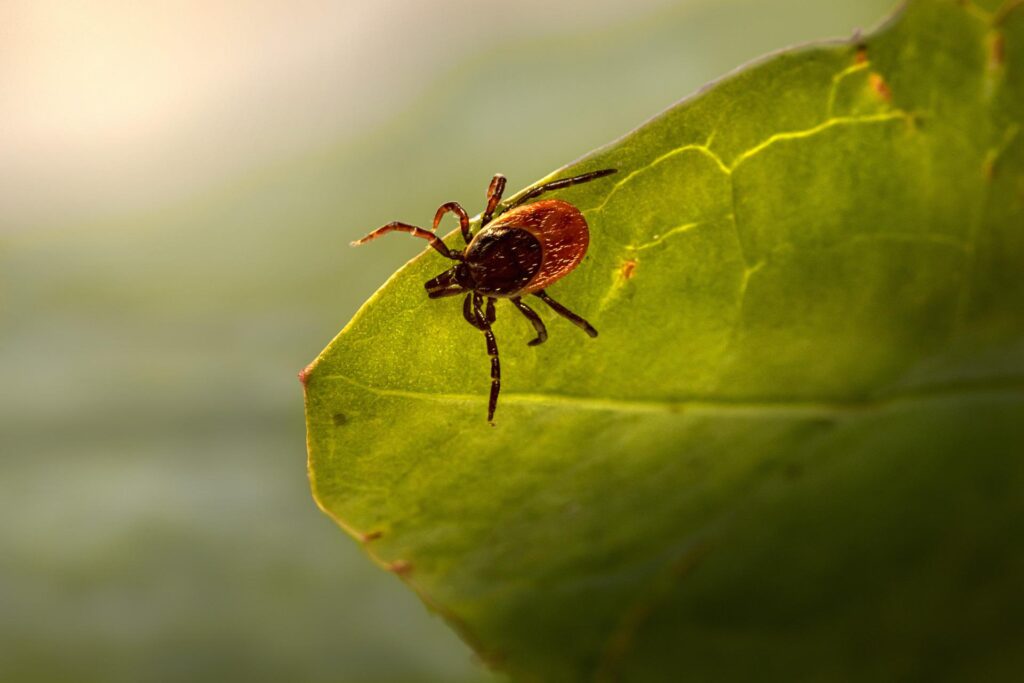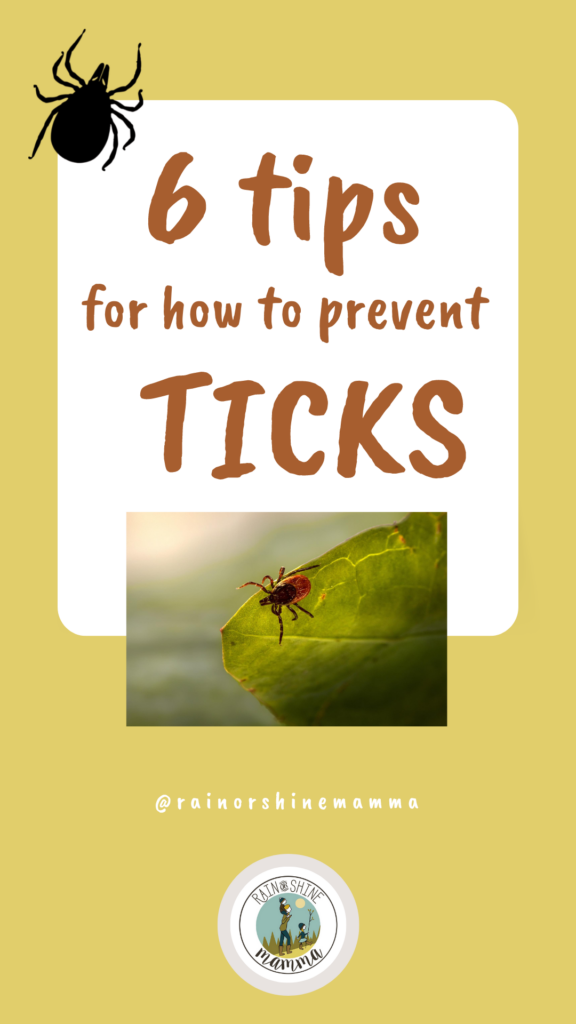The other day, our cat had just snuggled up on my daughter’s pillow in bed when she saw something making its way through his soft, white fur. She knew immediately that it was a tick. Spring, summer and fall are high season for these pesky little critters and where we live they are everywhere, just waiting to hitch a ride with us on the trail or sneak into our home by way of our pets. Over the years, I’ve plucked at least a dozen ticks off my kids and probably well over a hundred off our cats. I’ve found them crawling in my hair and burrowed in the crease behind my ear and in my armpit. Once, I even accidentally decapitated one while shaving my bikini line. I was not impressed, and neither was presumably the tick.
The bad news is that ticks can carry a host of diseases like Lyme, Rocky Mountain Spotted Fever and, in parts of Europe and Asia, tick-borne encephalitis (TBE), which can cause serious adverse health effects in humans. The ticks’ range is also expanding due to global climate change, as they thrive in warmer temperatures. The good news is that we generally tend to overestimate the risk of getting sick from ticks, as only a fraction of the bites actually result in disease. So, before you let fear get the best of you and cancel summer, educate yourself on the risks and how to prevent ticks and tick bites.
Are you at risk?
Your risk of contracting Lyme disease, which is the most common tick-borne disease in North America and Europe, essentially comes down to three factors: the species of the tick, your location and how long the tick has been feeding. In the U.S., Lyme disease is only transmitted by blacklegged ticks, also known as deer ticks. Even if you’re bitten by a deer tick, the risk of infection is low if you’re not in Connecticut, Delaware, Maine, Maryland, Massachusetts, Minnesota, New Hampshire, New Jersey, New York, Pennsylvania, Rhode Island, Vermont, Virginia or Wisconsin, as 95 percent of the cases occur in these 14 states. The risk decreases even further if you remove the tick promptly, as it takes an estimated 36-48 hours for the bacteria that causes Lyme disease to be transmitted. These rules don’t necessarily apply to more unusual tick-borne diseases, like Rocky Mountain Spotted Fever, which makes it even more important to know how to prevent ticks from attaching in the first place.

6 tips for tick prevention
- Dress right. Long-sleeved, light-colored clothes make it easier to spot ticks before they have a chance to attach. Tuck your pants into your socks for extra protection, since ticks typically move from the bottom of your body and up. (Contrary to popular belief, they don’t jump down
from trees.) - Know the habitat. Ticks like tall grass and often lurk at the top of the straws, waiting for a potential host animal to walk by, so stay on the trail and avoid meadows and other grassy areas to minimize the risk of picking up hitchhikers. That said, ticks also thrive in shrubs, wood piles, stone walls, leaf piles and fallen branches. Avoiding their habitat altogether may be a tall order but by educating
yourself about their whereabouts out you know when to be extra vigilant. - Keep your lawn tidy. As many as 75 percent of Lyme disease cases are caused by tick bites in people’s own backyards. By mowing often, cleaning up brush regularly and keeping wood piles and other debris away from patios and play areas, you can make your backyard less hospitable to ticks. The Centers for Disease Control and Prevention (CDC) also recommends creating a 3-foot wide barrier of wood chips or gravel between patios and woods to make it harder for the ticks to migrate.
- Consider using repellents. A repellent can help keep ticks and other insects at bay but don’t rely solely on a bug spray, since it may not be 100 percent effective. Repellents can be made of synthetic chemicals or plant-based materials and come in many different forms. Choose repellent wisely, since some of them contain harsh chemicals.
- Treat with heat. Once you go back inside, strip down and put your clothes straight in the dryer and run it on high heat for a minimum of six minutes. You could also wash the clothes, but the water must be hot (over 130F) to kill the ticks. Showering within two hours after you come inside can also help you get rid of ticks and reduce your risk of getting Lyme disease, studies show.
- Do a tick check. This is, in my opinion, by far the most important step to prevent infection from tick bites. Make a habit of doing a full-body check after you’ve been in tick-infested areas and teach your kids how to identify ticks and check themselves as well. Ticks are especially drawn to dark, moist areas on your body, such as:
- Armpits
- In and around ears
- Belly button
- Back of knees
- In your hair
- Between your legs
- Around the waist
Using tick repellents
Conventional advice for how to prevent ticks and tick bites typically zero in on sprays containing chemicals like DEET, Permethrin and Picaridin. While all are deemed safe for use by the Environmental Protection Agency (EPA), I personally find using bug sprays problematic, since the long-term effects of applying harsh chemicals to your skin are not fully understood. For that reason, I try to stick with the safest and gentlest alternatives and only use bug sprays if I’m in an area with a high risk of tick-borne diseases.
My first choice is:
Oil of lemon eucalyptus (OLE), a repellent based on extracts from the leaves of the lemon eucalyptus tree that have been enriched to increase the concentration of the active ingredient PMD and should not be confused with natural lemon eucalyptus essential oil. OLE can also be made synthetically in a lab. It’s the only plant-based tick repellent that is recommended by the CDC and has even been found to be more effective than DEET in one test, providing up to six hours of protection against ticks in concentrations of 30 percent. OLE should not be used on children under 3, since it can cause skin irritation.
Here’s a quick run-down of some other common options:
DEET is a very potent chemical that is known to damage gear and may even impair the nervous system in high doses. If you do use it, the Environmental Working Group (EWG) recommends choosing products with a 30 percent concentration or lower and notes that there are conflicting reports on which DEET concentration is deemed safe for children.
Picaridin is considered equally effective as DEET, if not more, and is less toxic. Although it hasn’t been tested as thoroughly, the EWG considers it a good alternative to DEET. A 5-10 percent concentration of Picaridin can protect against ticks for up to twelve hours and in concentrations of 20 percent it provides all-day protection.
Permethrin is a synthetic chemical that is commonly used to treat clothes, shoes and camping gear, like tents. You can also buy clothes that are pre-treated with Permethrin, primarily socks. According to the EPA, Permethrin-treated clothing is considered safe to wear, but the chemical is highly toxic to fish, bees and other beneficial insects.
Essential oils haven’t been thoroughly tested against ticks and the homemade formulas that I’ve tried haven’t been effective but a lot of people swear by them. My two cents are that essential oils and other all-natural formulas could be worth a try, as long as you dilute them enough to prevent them from irritating your skin and remember to reapply them often, since they’re not as potent as chemicals.
How to remove a tick
Should you get a tick bite despite taking precautions, be sure to remove it promptly, using regular tweezers or a specially designed tool for tick removal. I highly recommend this crowbar-shaped tick removal tool, which I’ve used successfully for many years.
I’ve also seen a similar version that has a hole, so that it can go on your key ring, and some that are attached to a carabiner. I personally haven’t tried them but I think both are a great idea if you’re planning for an extended stay in tick-infested areas, for example while camping.
Once you’ve removed the tick, experts recommend putting it in a resealable plastic bag in the freezer,
especially if you’re in an area with high rates of tick-borne illnesses. Preserving the tick will help your healthcare provider give you a correct diagnosis in case you were to get sick.
Do you have anything to add to these tips on how to prevent ticks? If so, please let me know in the
comments.









